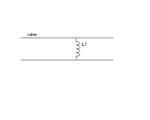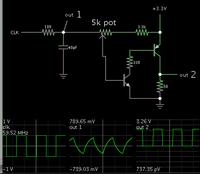raguna
Junior Member level 3

- Joined
- Apr 23, 2010
- Messages
- 30
- Helped
- 4
- Reputation
- 8
- Reaction score
- 4
- Trophy points
- 1,288
- Location
- Earth
- Activity points
- 1,540
Hi all!
How can I generate a (0 to 3.3V) 60MHz sharp edge clock. I can get upto 100MHz sine wave with my function/signal generator. If I use any high speed comparator, there is always an offset( around 0.2V) at the output. Can I have some option/methods for its generation.
Thanks
How can I generate a (0 to 3.3V) 60MHz sharp edge clock. I can get upto 100MHz sine wave with my function/signal generator. If I use any high speed comparator, there is always an offset( around 0.2V) at the output. Can I have some option/methods for its generation.
Thanks





